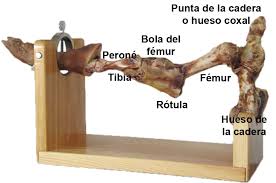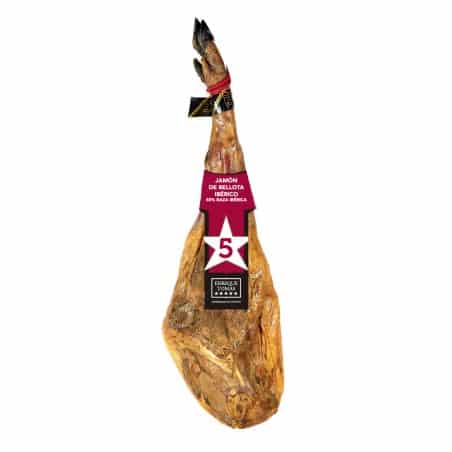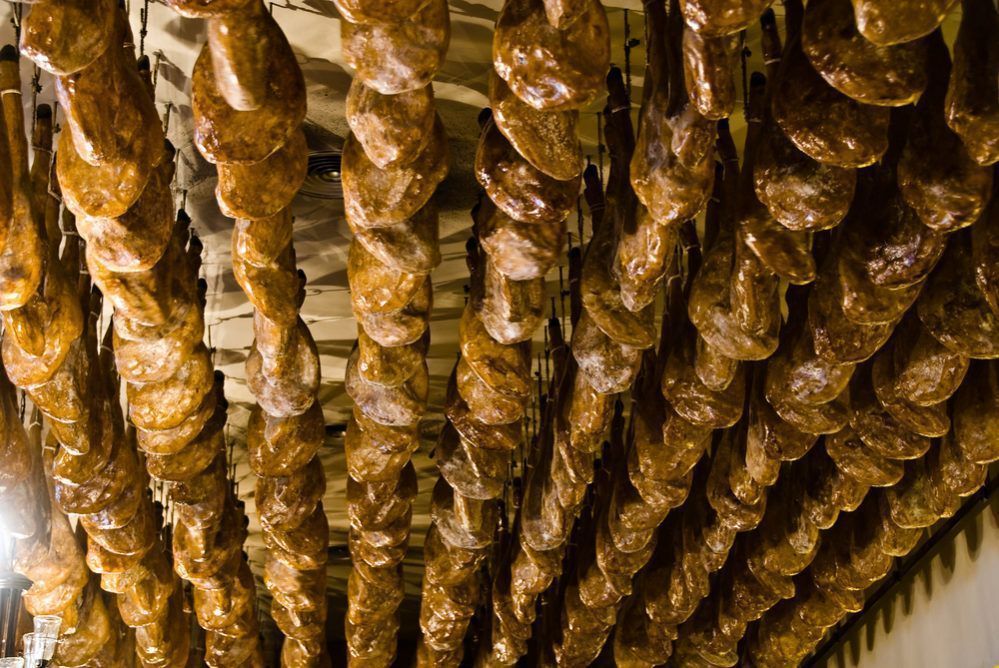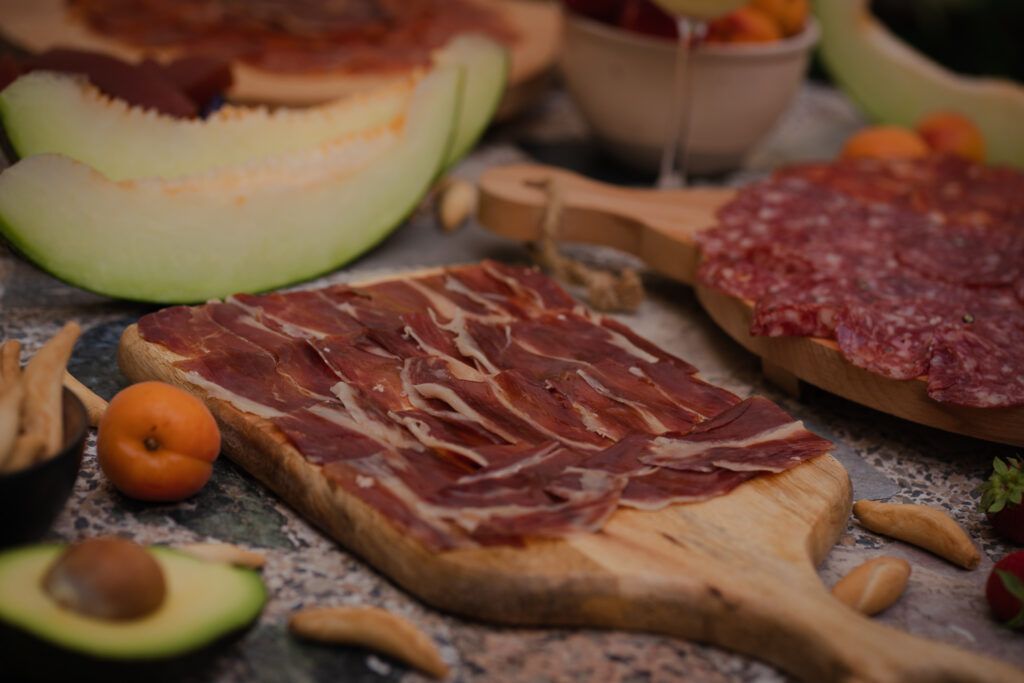
Differences between Ham and Shoulder
1 commentHam or Shoulder? They come from the same animal but they are not the same even though they might look similar at first glance. We all know what we mean when asked "Do you prefer the thigh or the breast?" when it comes to roast chicken.
But when it comes to ham, not everyone is clear about the differences between ham and shoulder. That's why at Enrique Tomás, we want to help you understand what you're getting in each case.
Ham or Shoulder?
When it comes to buying ham or buying shoulder, we always ask ourselves the same question: Which is better, ham or shoulder? And the first thing to consider is that neither is better than the other, they are simply different. We are all aware that the main difference between ham and shoulder is the price, but that's not the only factor that sets them apart. The flavor and the part of the pig they come from are other aspects to highlight. And let's not forget a very important one: the cut.
Cutting ham is not the same as cutting shoulder. While the tools and methods are the same, the way of doing it changes because these are two different limbs with distinct anatomies, and therefore each requires its own cutting technique. Let's get started!
If you want to buy a good product and this doubt is on your mind, you no longer need to worry because at Enrique Tomás, as the ham masters we are, we'll explain the differences between ham and shoulder below, so that when you choose, you'll buy exactly what suits you best.
What Are the Real Differences Between Ham and Shoulder?
The first thing to consider is the part of the animal from which both products are obtained. The pig has two front legs and two hind legs; "paletilla" or shoulder is the term for the two front legs, while "jamón" refers to the hind legs. Due to their physical structure, the hind legs are larger and meatier than the front legs, which are thinner. Consequently, ham has more meat than shoulder, and in the latter, the bone occupies more space.
From here, we'll break down the physical characteristics, production, flavor, and especially the cutting methods.
Let's get started!
Anatomy
The shoulder is most similar to an arm since it's the front leg located near the pig's snout, and it ends at the scapula. In contrast, the ham, as mentioned before, supports the meatiest and most muscular part of the animal and ends at the hip or coxal bone. You can see this more clearly in the attached diagrams.

Ham Bone, Hind Leg

Shoulder Bone, Front Leg
Yield
When we talk about the yield of ham and shoulder, we are referring precisely to this: the amount of meat that can be obtained from both products. The yield of shoulder is lower due to clear reasons of size and shape; it can also be sliced or cut into shavings and chunks, but due to the shape of the bone and its narrower profile, less meat can be obtained.
On the other hand, ham has a higher yield, and practically everything can be extracted from it. However, the breed of the pig and its feeding regimen will also influence the amount of lean meat and fat, affecting the yield.


50% Iberian Acorn-Fed Shoulder - Selection
Curing Time
The proximity to the bone accelerates the curing process, and since the shoulder has less meat and is closer to the bone, it cures faster, resulting in less time spent in the cellar.
The "Gran Reserva" Shoulders from Enrique Tomás are the most cured on the market, requiring 15 months to be ready, whereas ham takes up to 18 months. "Ibérico de cebo" shoulders take 18 months, and this type of ham takes two years. On the other hand, acorn-fed shoulder takes 24 months, while acorn-fed ham takes 36 months to cure.
This curing time influences the final price of the product. Since shoulders require less time in the cellar, their cost is lower than that of ham, which requires more time and extended care from the master ham maker.
Flavor
When it comes to flavor, keep in mind that since the meat of the shoulder is closer to the bone, its taste is more intense. This makes it better suited for those accustomed to stronger and more mature flavors. However, if you prefer a milder taste, it's recommended to buy ham.
Intended Use
Flavor is important, but it shouldn't be the sole factor in our purchase decision. We need to consider what we need it for and how many people are in our household. If there are one or two people in the family, it's better to go for a shoulder, as it's unlikely that you'll consume an entire ham within three weeks (even less in the summer), unless you frequently have guests.
On the other hand, a large family can easily consume a ham within the recommended time frame if they eat it every day.
Whether it's ham or shoulder, keep in mind that you need to slice a little each day, around 80 grams for a shoulder and around 150 grams for a ham. This will keep it in good condition and prevent it from drying out too much.
Of course, for those who enjoy a bit of ham whenever they like, which is actually most of us, it's best to buy it already sliced into slices, shavings, or chunks in vacuum-sealed bags depending on your preferences and needs.

Perfect Ham Slice

Curing Process of a Ham

Iberian Ham Platter
The Cutting Process
In general, ham is easier to cut than shoulder because it has more meat and less bone. The most important thing is to always maintain good posture, keep the arm that's not cutting above the knife, use a ham holder, and have a good ham knife and a deboning knife, both well sharpened. Keep in mind that the size of the slice should neither be large nor too thick. It should be small enough to fit in your palate and thin enough to experience all its aromas.
The cut is fundamental to enjoy eating ham. A medium quality ham can be excellent if it is well sliced, just as a high quality ham can lose all its potential if it is badly sliced. Imagine what a waste it would be for an artisan work that in some cases has taken more than three years to cure.
The best way to see how a shoulder and a ham is cut is to see it directly. That is why we have created some videos on our Youtube channel to help you get started and get some practice.
The price
Generally, if you ask someone which is better, ham or shoulder ham? They will say ham because they tend to think that because it is more expensive, its quality is better, but this is not the case. The retail cost is not determined by the exquisiteness of the products, but by the time it takes to produce them. Shoulder ham takes less months to cure than ham and therefore costs less.
As for the flavour, if you try a slice of shoulder ham and then a slice of ham, you will be able to tell the difference immediately, as the taste of the former is more intense and powerful than that of the latter, which is milder.
Therefore, neither ham is better than shoulder, nor shoulder is better than ham; they are different products that are produced in the same way. Whether you choose to buy ham or shoulder, at Enrique Tomás we assure you one thing, you will fall for their charms because both are really delicious!
Other tips if you want to know more:




1 comment
Se agradecería una explicación de cómo diferenciar la paletilla del jamón una vez cortado y en el plato, ya que es la forma en la que más habitualmente consumimos estos manjares.